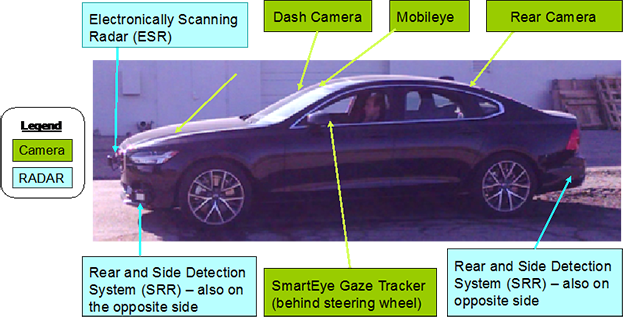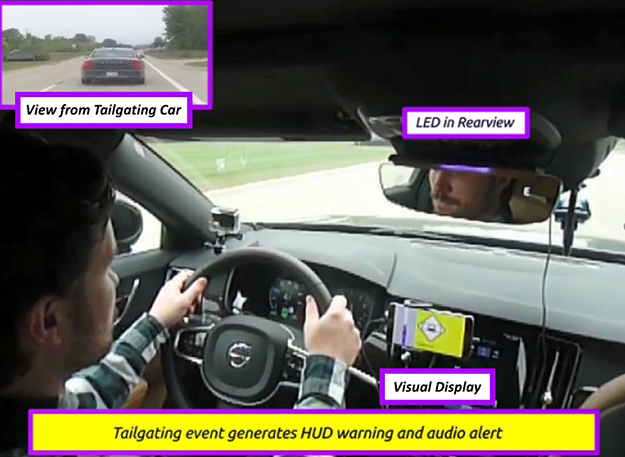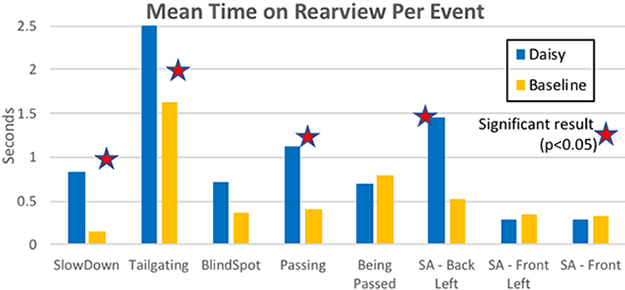Supporting Safe Handoff between Human Drivers and Automated Driving Systems
The U.S. Department of Transportation’s (U.S. DOT) highly competitive Small Business Innovation Research (SBIR) program awards contracts to domestic small businesses to pursue research on and develop innovative solutions to the nation’s transportation challenges, while helping grow small businesses.
With support from U.S. DOT’s SBIR program, Soar Technology, Inc., based in Ann Arbor, Michigan, developed a system that alerts drivers to their surroundings during the handoff between an automated driving system and a human driver—a key challenge in safely integrating autonomous vehicles into our nation’s transportation system.
The system reduces the time drivers spend orienting themselves to what is happening as they take control of the vehicle, minimizing the risk that a disoriented driver will react slowly or incorrectly.
The Challenge
Vehicle designs that include limited autonomy, a system where the vehicle performs some but not all tasks usually handled by a human driver, require a human driver to take control of the vehicle in emergency situations. Manufacturers and suppliers of limited autonomy vehicles are currently working to safety streamline the handoff from an automated driving system to a human driver.
The driver, disengaged from driving for a period of time, may be unaware of the environment when the vehicle requires a takeover, and may take several seconds to react.
The Technology
The Driver’s Assistant for Intelligent SafetY (DAISY) system helps the driver maintain awareness of important events occurring around the vehicle during the handoff.

DAISY installed on a commercial vehicle. The system includes aftermarket sensors: radar, cameras, and a gaze tracker. It also includes user interface components within the cabin (not shown) including LEDs, speakers, and an audio controller, screen-based display, and seat shaker. (Soar Technology, Inc. image)
The DAISY system observes and tracks events such as other cars merging, passing, or tailgating, and assesses which of these events the driver is aware of based on the driver’s gaze. If the driver is unaware or minimally aware of an event, DAISY communicates in one of several ways, including a heads-up display (HUD), LEDs, or audio alert. How the system alerts the driver depends on the urgency and risk associated with the event.

DAISY alerts drivers to situations that require their attention, like tailgating. (Soar Technology, Inc. image)
The Benefit
A user study conducted at the American Center for Mobility test track found that DAISY increases drivers’ awareness of peripheral events (e.g., to the side and behind), as shown by an increase in the time drivers spent looking at events in the rearview mirror.
Drivers testing DAISY were more aware of obstacles in their surroundings, like vehicles slowing down, tailgating, and passing during handoff from the automated driving system. They were also more aware of vehicles in the immediate vicinity, regardless of whether they were an obstacle.

Drivers spent more time observing events in the rearview mirror, indicating increased awareness of the event, in 4 of 8 categories that the DAISY team evaluated. (Soar Technology, Inc. image)
The Future
The DAISY system is a proof-of-concept prototype designed for a common subset of events that occur during highway driving. The next steps for the technology include expanding the set of events the system can detect, building a more robust model of driver awareness from a larger set of drivers, and further modularization for easy integration into a vehicle.
DAISY holds promise as a technology that can help solve the problem of handoff in limited autonomy vehicles.
Soar Technology is currently working to commercialize the technology for car manufacturers. Systems based on DAISY are also currently being developed and tested for military use to improve warfighter safety when operating unmanned vehicles in combat environments.
How SBIR Helps
The SBIR award provided the necessary research and development funding for Soar Technology, Inc. to move the DAISY concept from idea to prototype.
“Without SBIR, Soar Technology would not have been able to execute this level of research and development internally,” stated Jacob Crossman, senior research engineer at Soar Technology. “[The project] involves significant man-hours of engineering, along with purchase of a vehicle, sensors, and other expensive hardware.”

